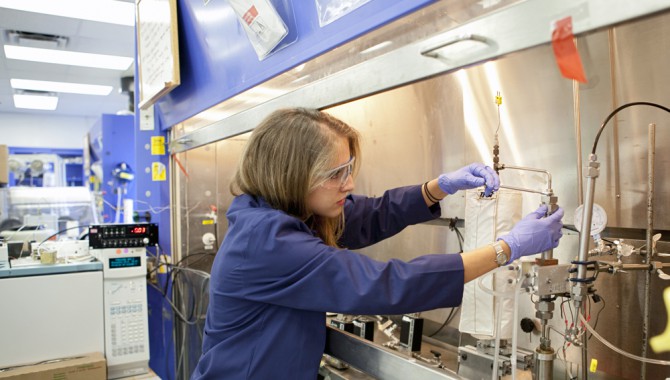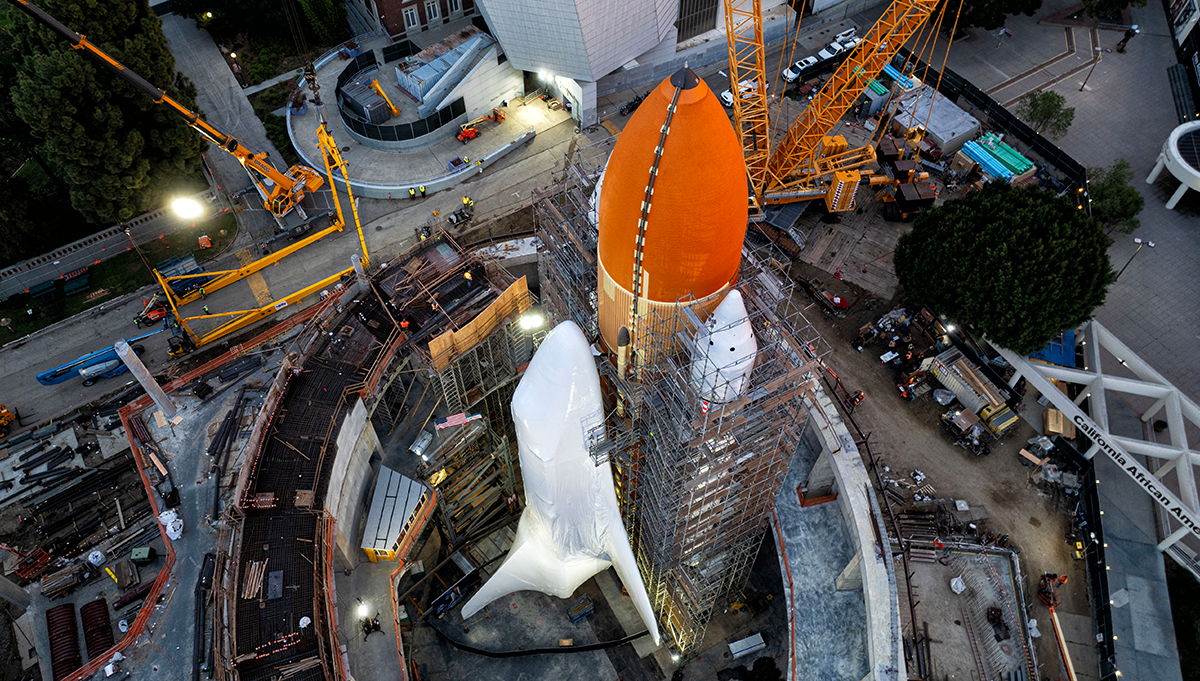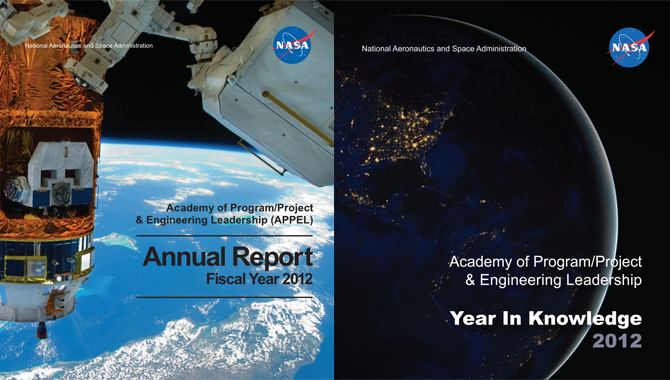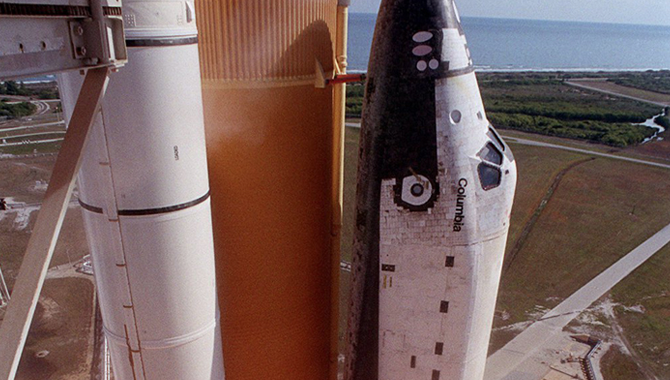
Chemist Anne Caraccio works with a prototype reactor for incinerating trash in space. The device is inside a lab at NASA's Kenendy Space Center in Florida. She is part of the team developing a mechanism to burn trash and extract valuable gases from the material. Photo Credit: NASA/Dmitri Gerondidakis
Vol. 6, Issue 1
Young professionals at Kennedy Space Center (KSC) shared how they seek out and share knowledge at NASA—and it doesn’t involve tweeting or texting.

Chemist Anne Caraccio works with a prototype reactor for incinerating trash in space. The device is inside a lab at NASA’s Kenendy Space Center in Florida. She is part of the team developing a mechanism to burn trash and extract valuable gases from the material.
Photo Credit: NASA/Dmitri Gerondidakis
“If I want to learn about something, the very first thing I do is go to Google,” said David Miranda, a simulation engineer at the IT Directorate at KSC of five years, addressing an audience of chief knowledge officers and points of contact from across NASA. He explained that he’ll begin with a resource that gives him a basic understanding of a topic—usually Wikipedia—and then drill down to find more detailed referenced materials. Neither of these sites, he noted, are NASA sites.
Miranda was joined by Skip Owens, a systems engineer currently with the Launch Services Program, Billy McMillan, a member of the Launch Services Program business office in charge of reimbursable contracts, and Anne Caraccio, a chemical engineer in the materials science division who does research and technology development, to share perspectives with the NASA knowledge community about how they find, use, and share knowledge at NASA.
“It’s not just about information,” Miranda continued. “Sometimes you want to know the person who knows about that information. You need to be able to search for people who know about that information.”
Talking with people and hearing their stories is McMillan’s preference. “I love a good story and the visuals to go along with it,” he said.
Noting that it is commonplace for people to retreat to their cubicles and not participate in these valuable types of conversations, Owens suggested that part of this reluctance is due to the difficulty of explaining the benefit of taking the time to talk with others face to face. “I think we need to do a better job of stressing that sharing your knowledge is part of your day job,” said Owens.
McMillan recommended addressing this issue by creating spaces that enable employees to participate in collaborative and spontaneous conversations. McMillan, Miranda, and Owens have been involved in initiatives to create collaborative spaces at Kennedy. (See “The Space to Collaborate, the Space to Share.”)
Training and leadership programs that offer hands-on experience were cited as another effective way to acquire knowledge. Caraccio shared how her experience in Kennedy’s six-month Accelerated Training Program, which allowed her to visit and shadow members of different directorates and disciplines at her center while working on a project of her own, accelerated her early-career development. Now, when she needs some type of equipment, or has questions about a safety regulation, or wants to broadcast news about a technology she’s working on, she knows how to get things done because of this program.
“When you come into NASA for the first time as a full-time employee there’s so much you don’t know. But for you to have your own project that you can run with, it forces you into the system,” said Caraccio. “For me, in terms of getting knowledge at NASA, it’s been in terms of talking with people and figuring out what they do.”
Other leadership programs such as NASA FIRST and Kennedy’s SEAL (Systems Engineering Advancement and Leadership) program were mentioned as valuable ways to engage with what NASA knows. The challenge, explained McMillan, who graduated from the FIRST program, is that these programs are only available to a small group of early-career hires at NASA.
The panelists shared their insights about the importance of training opportunities within and outside NASA, effective and accessible online tools such as wikis and search engines, and professional groups such as Kennedy’s Spaceport Innovators, Launching Leaders, and Systems Thinkers. Each group offers the opportunity to learn about different disciplines and hear stories from expert practitioners about innovative ideas.
“It’s amazing how much you can learn from people if you can just talk to them and listen to them,” said Miranda, who has had the opportunity to learn a great deal from these groups at Kennedy. “It seems like these are things that are not related to IT, but the IT service organization serves the programs, and when I learn about all these different things, I find new opportunities about how I can support the programs I wouldn’t normally learn if I was just in my cubicle doing my work,” he said. “In the five years [I’ve been at Kennedy], it’s probably the most important thing that I’ve done: just taking that one hour once a week to just go listen to someone talk.”
One of the biggest barriers to innovation, collaboration, and effective knowledge transfer at NASA is the need for a culture change, the panelists said, which is challenging in itself. “It’s not a system. You don’t need software,” said McMillan. “It’s our way of interacting with each other that needs to change, not so much throwing money at the issue.”









